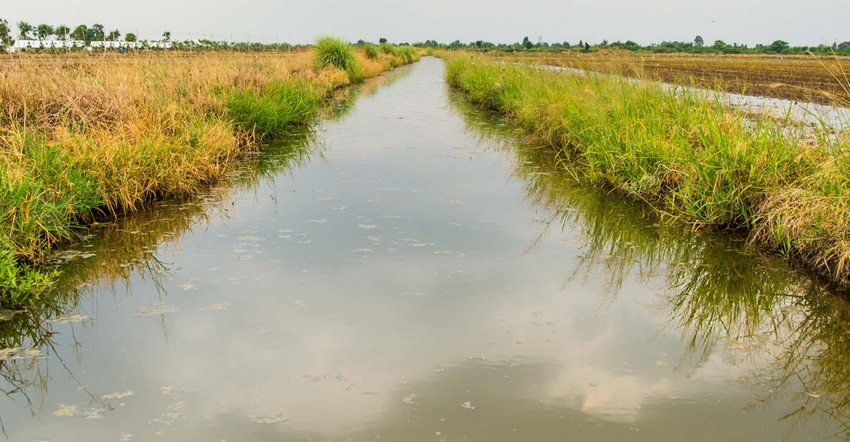
The Environmental Protection Agency (EPA) and the U.S. Army Corps of Engineers (Corps) define several terms involving what is a water.
The term “ditch” has been a source of considerable confusion for farmers and ranchers. The December 2018 proposal (Not published in Federal Register due to government shutdown) evaluates categories of ditches to determine if the ditch would be a Water of the United States or a point source.
A ditch is defined as “…simply artificial channels used to convey water.” This is still confusing!
A ditch will be a WOTUS if it is constructed as a tributary, the ditch meets the conditions of a tributary definition, or the ditch is constructed in an adjacent wetland. All other ditches will be excluded from the definition of WOTUS. However, ditches not covered by the new proposal could still be regulated by States and Tribes.
If you are confused at this point, you are not alone.
Some good news
There is some good news in the proposal. For example, ��“…man-made, non-tidal drainage and irrigation ditches excavated on dry land are not considered Waters of the United States.” (Nothing new.)
The Obama administration proposal expressly included man-made features such as ditches and canals in its definition of tributaries but did exclude ditches with “ephemeral” flow. EPA’s and the Corps’ proposal does include tidal ditches and ditches that transport goods and services in interstate and foreign commerce.
You and I would call these ditches canals.
Ditches are also presumed to be WOTUS if they are constructed in a wetland, assumes the wetland would be adjacent and the ditch would have to satisfy the conditions of being a tributary. The agencies seem to be saying a ditch is a ditch if it meets the requirements of what is a tributary. The ditches are described this way: “…ditches likely functionally maintain some of the same interconnected relationship between drained wetland and navigable water that supported federal jurisdiction over the adjacent wetland in the first instance.”
The agencies attempt to help agriculture and ranching by stating “Ditches used to drain surface and shallow subsurface water from a cropland are a quintessential example of the interconnected relationship between land and water resource management, as is managing water resources in the western United States, conveying irrigation water to and from fields, and managing surface water runoff from lands and roads following precipitation-all activities that rely on ditches.”
Leave it to the states
EPA and the Corps say this type of ditch is left to the States to regulate.
One portion of the proposed definition of ditch remains the same and is a potential litigation issue. A ditch would be a water of the United States if it is “…currently used, or…used in the past, or may be susceptible to use in interstate or foreign commerce, as well as ditches which are subject to the ebb and flow of tide.”
A ditch will also be considered a WOTUS if it has been constructed as a tributary and satisfies the conditions of being a tributary. In other words, if a ditch met the tributary definition prior to construction or reconstruction it would remain under the jurisdiction of EPA and the Corps.
As in each definition section, the two agencies are seeking public comment on the December proposal once it is printed in the Federal Register.
One request for comment is concerning for farmers and ranchers. The two agencies want comment on ditches which are constructed in upland areas that flow perennially. Because the ditch is in an upland, there would be no government jurisdiction. The agencies want to know if such a ditch should be jurisdictional even if the ditch meets the tributary definition.
This definition is dangerous for agriculture and ranching.
The opinions of the author are not necessarily those of Farm Futures or Farm Progress.
About the Author(s)
You May Also Like




